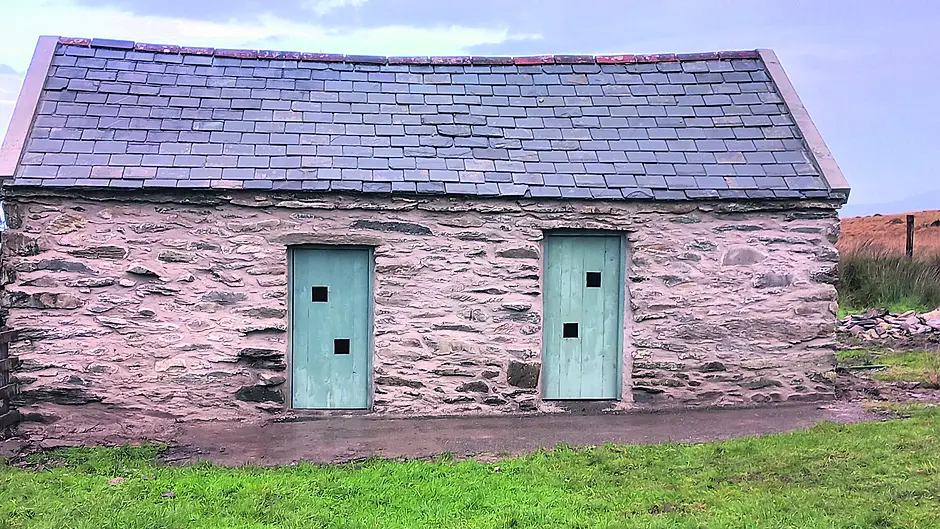BY HELEN RIDDELL
A CENTURIES-old farm building in Eyeries, Beara has been restored and preserved for future generations, and will be used to provide shelter for local wildlife.
The stone building, in Croumphane, Eyeries, has been in the family of PJ Cadogan for generations.
The building had fallen into disrepair, but thanks to a grant of €10,500 from The Heritage Council’s Traditional Farm Building Scheme, the building has now been fully restored.
The funding scheme is a collaboration between the Heritage Council and the Department of Agriculture, Food and the Marine, and its principal objective is to ensure that traditional farm buildings and other related structures that contribute to the character of the landscape, and are of significant heritage value, are conserved for agricultural use, and also to preserve the roosts and nesting sites of protected species.
The building had previously been used to house animals. PJ’s partner Sadhbh outlines how he remembered stories that his grandparents had kept chickens and pigs in the building, which over the years had fallen into disrepair. From historic ordnance survey maps, they estimate the building was constructed pre-mid nineteenth century.
‘The building was in quite a bad state, but we managed to salvage a lot of the timber and were able to reuse all the original slates,’ said Sadhbh.
The couple had to wait until late September before they could start the work in order to ensure that any swallows nesting in the building had left. They also worked with bat conservation expert Mark Donnelly. ‘He didn’t find any evidence of bats,’ said Sadhbh, ‘but we are hoping that they will start to use it as a roost, and that swallows will continue to nest in the building.’
In restoring the building the couple were guided by the Heritage Council and a conservation architect and used traditional materials, such as lime-mortar.
‘We were able to reuse much of the original timber, but we had to have new door frames and windows made. The new doors now have holes cut in them to allow for access by bats and swallows,’ she said.
Although undertaking most of the work themselves, the couple praised the support they were given through the restoration project.
‘We got great advice and help throughout the process and are delighted to be able to conserve this building. The majority of the work was undertaken by ourselves which meant we were able to give it the time and care we felt it deserved considering its long history within the family. Thanks to The Heritage Council the revival and sustainability of this building was possible and for that we are very grateful.’









